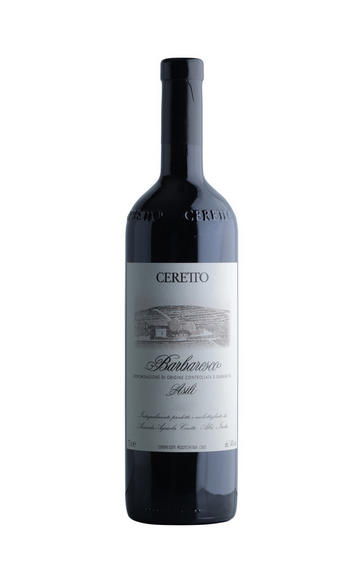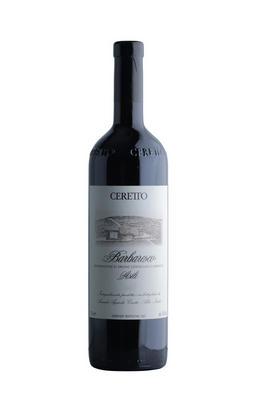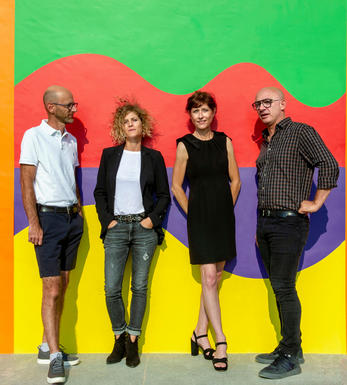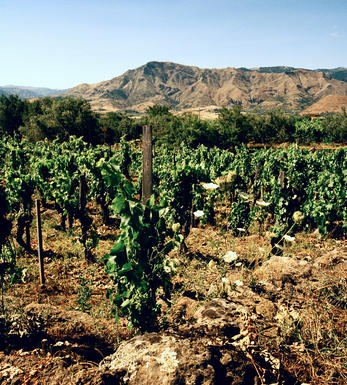
2020 Barbaresco, Asili, Ceretto, Piedmont, Italy

Critics reviews
The 2020 Barbaresco Asili is quite simply textbook Asili. Fragrant and silky, with tremendous fruit purity and class to burn, the 2020 is so impressive. All the elements are so well balanced in a Barbaresco that impresses with its pedigree. A long, beautifully persistent finish rounds things out in style.
Alessandro Ceretto presented a compelling set of 2020 Barbarescos and 2019 Barolos. These are some of the most impressive wines I have tasted in 20+ years of visiting. The Barbarescos are super-classic wines built on a gorgeous aromatic presence and elegant, mid-weight structure. I admire the Barolos for their transparency and expression of place. Harvest occurred between October 3 and 8, placing Ceretto among the earlier pickers in this vintage. The wines spent about 25 days on the skins. Malolactic fermentations were done in neutral French oak where the wines spent about nine months before being racked into Stockinger casks for ageing.
Drink 2025 - 2040
Antonio Galloni, Vinous.com (January 2023)
Barbaresco. Mid-to-deep ruby with orange tinges. Subtle raspberry nose with just a pinch of savoury oak. Soft raspberry fruit with just the right amount of grainy tannins. Juicy and just a little light.
Drink 2023 - 2028
Walter Speller, JancisRobinson.com (July 2023)
If there is an MGA which benefits from the volume of 2020 vintage it is Asili which is well known for its lean, pure elegance. Parma violet is wrapped up in watermelon fruit, leafy lightness and a floor of spices among smoky woodland, liquorice and roots. The lush fruit on the palate is sustained by crisp acidity and dense, silky tannins with a grippy finish due to its youth, soaked with a savoury blood orange aftertaste. A super-elegant Asili with volume. A great wine.
Drink 2023 - 2040
Aldo Fiordelli, Decanter.com (January 2023)
About this WINE

Ceretto
This family-run business was founded by Riccardo Ceretto in 1937, principally as a négociant in Alba. He was joined by his sons Bruno and Marcello in the 1960s. Wanting to make and sell their own wines, they began to buy premium land in Barolo and Barbaresco and were among the very first in the region to see the potential of single-vineyard wines. Bruno’s children, Federico and Roberta, and Marcello’s, Alessandro and Lisa, joined in the 1990s. After a period of change and experimentation, a particular style emerged in 2010, utilising shorter skin contact, and a mix of barrique and small botte for a supple but precise expression of Nebbiolo. The family are also involved in various artistic and heritage projects, including the rejuvenation of the famous Piedmontese hazelnuts and two restaurants in Alba: La Piola and the three-star Michelin Piazza Duomo.
In recent years, Ceretto’s winemaking style has been more relaxed, and it is interesting to see how this plays in a vintage like 2019. The 2018 wines were undeniably very successful, with the heady fruit of the year brilliantly captured and expressed. In 2019, that immediacy is more muted, but where Ceretto’s house style does succeed is in working finesse into the tannins. Many producers reported that their 2019s were slow to evolve once in barrel or bottle, and it was only towards the end of their time in wood that the quality of the vintage began to shine. That is not the case here. The purity and linear expression of the vintage has been in place for Ceretto’s wines right from the start. These are more intellectual wines than the 2018s, and their qualities are self-evident.

Barbaresco
The Piedmontese DOCG zone of Barbaresco is responsible for producing some of Italy’s finest wines. It occupies the same region and uses the same grape (Nebbiolo) as its bigger brother Barolo, but is a third of the size (only 640 hectares versus Barolo’s 1,700 hectares). It is also 50 years younger than Barolo, having produced wine labelled Barbaresco since 1890.
Barbaresco earned its DOCG after Barolo in 1980, largely thanks to the efforts of Angelo Gaja. The soils are lighter here than in Barolo – both in colour and weight – and more calcareous. The slopes are also less favourably situated and (relatively speaking) yield earlier-maturing yet extremely elegant wines that require less oak ageing (normally one year in oak plus six months in bottle). The appellation’s key districts are Barbaresco, Treiso, Neive and Alba.
Recommended producers: Cigliuti, Gaja, Marchesi di Gresy

Nebbiolo
Nebbiolo is the grape behind the Barolo and Barbaresco wines and is hardly ever seen outside the confines of Piedmont. It takes its name from "nebbia" which is Italian for fog, a frequent phenomenon in the region.
A notoriously pernickety grape, it requires sheltered south-facing sites and performs best on the well-drained calcareous marls to the north and south of Alba in the DOCG zones of Barbaresco and Barolo.
Langhe Nebbiolo is effectively the ‘second wine’ of Piedmont’s great Barolo & Barbarescos. This DOC is the only way Langhe producers can declassify their Barolo or Barbaresco fruit or wines to make an early-drinking style. Unlike Nebbiolo d’Alba, Langhe Nebbiolo can be cut with 15% other red indigenous varieties, such as Barbera or Dolcetto.
Nebbiolo flowers early and ripens late, so a long hang time, producing high levels of sugar, acidity and tannins; the challenge being to harvest the fruit with these three elements ripe and in balance. The best Barolos and Barbarescos are perfumed with aromas of tar, rose, mint, chocolate, liquorice and truffles. They age brilliantly and the very best need ten years to show at their best.


Buying options
Add to wishlist
Description
The legendary Asili cru is where Ceretto first started planting Barbaresco, and they’ve been perfecting their style here since the 1960s. Their 1.2ha plot is located at the very top of the high bricco, facing south and south-west, and the result is pure elegance: dense red and black fruits, persistent silky tannins, complex notes of violets and smoky baking spices with an overall energy like a coiled spring. Beautiful expression of how finessed Barbaresco can be.
Drink 2027 - 2045
Berry Bros. & Rudd
wine at a glance
Delivery and quality guarantee